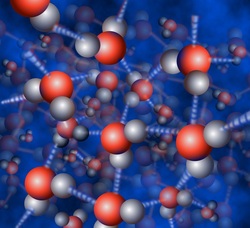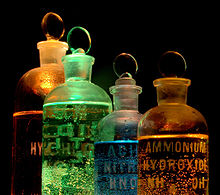Useful Resources and Links

2.1 Carry out quantitative analysis:
Empirical formula of magnesium oxide: This video shows steps and gives data for practical on p.6/7 of 2.1 workbook http://www.youtube.com/watch?v=OuFqtxZJRvM&feature=related
Empirical formula of magnesium oxide: This video shows steps and gives data for practical on p.6/7 of 2.1 workbook http://www.youtube.com/watch?v=OuFqtxZJRvM&feature=related

2.2 Carry out procedures to identify ions present in solution:
Precipitation Reactions - animated tour: http://chemteam.net/files/ELT.swf
Ion Identification: http://edcvs.co/XMI1gL
Precipitation Reactions - animated tour: http://chemteam.net/files/ELT.swf
Ion Identification: http://edcvs.co/XMI1gL

2.4 Demonstrate understanding of bonding, structure, properties and energy changes:
Lewis Structures - AUSE-e-TUTE tutorial (highly recommended): http://www.ausetute.com.au/lewisstr.html
Lewis Diagrams - pdf file with some additional explanations (extension): http://www.smallscalechemistry.colostate.edu/PowerfulPictures/LewisDiagrams.pdf
Lewis Diagrams - summary steps of how to do L.D.: http://www.elmhurst.edu/~chm/vchembook/201Lewisdiag.html
Shapes of Molecules - AUSE-e-TUTE tutorial (highly recommended): http://www.ausetute.com.au/shapemol.html
Shapes of Molecules - summary notes: http://www.webchem.net/notes/chemical_bonding/shapes_of_molecules.htm
Shapes of Molecules - summary notes (some additional shapes are there that you don't need to know about): http://www.chem.ufl.edu/~myers/chm2045/shapes.htm
Polarity - AUSE-e-TUTE tutorial (highly recommended): http://www.ausetute.com.au/molpolar.html
Determining Molecular Polarity - animated exercise:
http://employees.oneonta.edu/viningwj/sims/determining_molecular_polarity_m.html
Polarity of Bonds and Molecules - notes:
http://dwb4.unl.edu/Chem/CHEM869E/CHEM869ELinks/www.uis.edu/7Etrammell/organic/introduction/polarity.htm
Molecular Polarity - notes: http://preparatorychemistry.com/bishop_molecular_polarity.htm
Electronegativity - notes (very good): http://www.chemguide.co.uk/atoms/bonding/electroneg.html
Electronegativity and Bonds Polarity - summary notes (very good):
http://www.files.chem.vt.edu/RVGS/ACT/notes/electronegativity.html
Electronegativity and Polarity - notes with clear examples:
https://sites.google.com/site/ionicandcovalentbonding/Home/electronegativity-difference-polarity
Electronegativity: Classifying Bond Type - summary notes:
http://cccmkc.edu.hk/~kei-swt/materials/Bonding/Electroneg-Bond-Polarity.html
Bond Polarity and Electronegativity - concise notes (very good):
http://www.mikeblaber.org/oldwine/chm1045/notes/Bonding/Polarity/Bond05.htm
Chemical Bonding: http://edcvs.co/153xnSg
Lewis Structures - AUSE-e-TUTE tutorial (highly recommended): http://www.ausetute.com.au/lewisstr.html
Lewis Diagrams - pdf file with some additional explanations (extension): http://www.smallscalechemistry.colostate.edu/PowerfulPictures/LewisDiagrams.pdf
Lewis Diagrams - summary steps of how to do L.D.: http://www.elmhurst.edu/~chm/vchembook/201Lewisdiag.html
Shapes of Molecules - AUSE-e-TUTE tutorial (highly recommended): http://www.ausetute.com.au/shapemol.html
Shapes of Molecules - summary notes: http://www.webchem.net/notes/chemical_bonding/shapes_of_molecules.htm
Shapes of Molecules - summary notes (some additional shapes are there that you don't need to know about): http://www.chem.ufl.edu/~myers/chm2045/shapes.htm
Polarity - AUSE-e-TUTE tutorial (highly recommended): http://www.ausetute.com.au/molpolar.html
Determining Molecular Polarity - animated exercise:
http://employees.oneonta.edu/viningwj/sims/determining_molecular_polarity_m.html
Polarity of Bonds and Molecules - notes:
http://dwb4.unl.edu/Chem/CHEM869E/CHEM869ELinks/www.uis.edu/7Etrammell/organic/introduction/polarity.htm
Molecular Polarity - notes: http://preparatorychemistry.com/bishop_molecular_polarity.htm
Electronegativity - notes (very good): http://www.chemguide.co.uk/atoms/bonding/electroneg.html
Electronegativity and Bonds Polarity - summary notes (very good):
http://www.files.chem.vt.edu/RVGS/ACT/notes/electronegativity.html
Electronegativity and Polarity - notes with clear examples:
https://sites.google.com/site/ionicandcovalentbonding/Home/electronegativity-difference-polarity
Electronegativity: Classifying Bond Type - summary notes:
http://cccmkc.edu.hk/~kei-swt/materials/Bonding/Electroneg-Bond-Polarity.html
Bond Polarity and Electronegativity - concise notes (very good):
http://www.mikeblaber.org/oldwine/chm1045/notes/Bonding/Polarity/Bond05.htm
Chemical Bonding: http://edcvs.co/153xnSg

2.5 Demonstrate understanding of the properties of selected organic compounds:
Hydrocarbons: http://hyperphysics.phy-astr.gsu.edu/hbase/organic/hydrocarbon.html
Hydrocarbons: http://www.nyu.edu/pages/mathmol/library/hydrocarbons/
Hydrocarbons: http://hyperphysics.phy-astr.gsu.edu/hbase/organic/hydrocarbon.html
Hydrocarbons: http://www.nyu.edu/pages/mathmol/library/hydrocarbons/

2.6 Demonstrate understanding of chemical reactivity:
FeSCN2+ Equilibrium - Le Chatelier's Principle - You Tube clip for p.21/22 of course manual:
http://www.youtube.com/watch?v=ZOYyCTvLa9E
Chromate Dichromate Ion Equilibrium - Le Chatelier's Principle - You tube clip for p. 23/24 of course manual: http://www.youtube.com/watch?v=_jypU3FvS_o
Cobalt Complex Ion Equilibrium - Le Chatelier's Principle Lab - You tube clip for p.25 of course manual: http://www.youtube.com/watch?v=cWr3UDo-WeU
FeSCN2+ Equilibrium - Le Chatelier's Principle - You Tube clip for p.21/22 of course manual:
http://www.youtube.com/watch?v=ZOYyCTvLa9E
Chromate Dichromate Ion Equilibrium - Le Chatelier's Principle - You tube clip for p. 23/24 of course manual: http://www.youtube.com/watch?v=_jypU3FvS_o
Cobalt Complex Ion Equilibrium - Le Chatelier's Principle Lab - You tube clip for p.25 of course manual: http://www.youtube.com/watch?v=cWr3UDo-WeU

2.7 Demonstrate understanding of oxidation-reduction:
Redox Reactions: http://www.chemistry.co.nz/redox_begin.htm
Redox Reactions Definitions: http://www.chemguide.co.uk/inorganic/redox/definitions.html
Oxidation Numbers & Redox Reactions:
http://www.files.chem.vt.edu/RVGS/ACT/notes/oxidation_numbers.html
Redox Reactions: http://www.chemistry.co.nz/redox_begin.htm
Redox Reactions Definitions: http://www.chemguide.co.uk/inorganic/redox/definitions.html
Oxidation Numbers & Redox Reactions:
http://www.files.chem.vt.edu/RVGS/ACT/notes/oxidation_numbers.html
